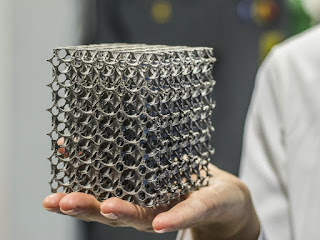While cryotherapy or frost therapy has been used for
millennia, the new cryotherapy center
fad that's become popular in salon culture has come under scrutiny when a
24-year-old woman who worked at a cryohealth center in Las Vegas was
found dead after using a cryo chamber at work. Learn more
about cryotherapy, what it claims to do for the
body, and whether or not it can be safely used.
The
Health Benefits of Cryotherapy
Advocates
claim that there are many benefits of cryotherapy and
that the treatment is highly safe when it is properly performed. The type of
whole body cryotherapy in
use at cryohealth centers
today was developed in 1978 as a rheumatoid arthritis treatment. While
this treatment is often covered by health insurance in other nations, the
U.S.healthcare industry does not recognize cryotherapy for
insurance purposes or much regulate the field.
Unlike
immersion in an ice bath, the chill of cryotherapy is
dry so it does not feel uncomfortable, like submersion in an ice bath would.
Exposure to chilled air can treat sports injuries, muscle soreness, joint pain,
pain and inflammation associated with health conditions like arthritis or
fibromyalgia, and immune function. Some even claim that cryotherapy can help with weight loss or delay the
aging process.
Is Cryotherapy Safe?
Individuals
with certain health conditions -- including hypertension, heart disease,
seizures, anemia, pregnancy, and claustrophobia -- should not use cryotherapy.
For other individuals, cryotherapy has
generally been considered safe. Some individuals may experience redness or skin
irritation, an allergic reaction to the cold, frostbite, or skin burns.
If
the individual stays in the cryotherapy chamber
longer than recommended, or the facility does not take the proper precautions,
health risks increase. Typically, people are only supposed to expose themselves
to the cold temperatures in the cryo chamber
for two to three minutes. The salon where the woman died was apparently selling
30-minute sessions, the New York Post reports. 30 minutes is too long to spend
in frigid temperatures.
In
the case of the employee who died in a cryotherapy chamber,
no one apparently knew the woman was in there since she went in alone after
work. Most cryotherapy chambers
only allow people to use the facility when someone is onsite monitoring them as
a first line safety precaution.
Even
if the employee did not follow proper procedures in entering the cryo chamber, her death raised awareness of
hidden dangers in this unregulated industry. People want to know whether this
popular treatment is safe for them. The salon where the woman died was not
licensed with the State of Nevada.
Safety
Measures for Cryotherapy
Cryotherapy can be safe when performed by a
licensed facility that has safeguards in place to make sure that those
undergoing treatment do not stay in too long, do not get overlooked, and are
not exposed to environmental hazards.
One
reliable way to monitor the environment of the cryo chamber is to use an oxygen monitor or
oxygen deficiency monitor. An oxygen deficiency monitor continuously measures
the amount of oxygen in the environment and sets off an alarm if
oxygen falls below a safe level.
Cryohealth
chambers use a form of nitrogen to create a dry frost and chill the chamber.
Nitrogen, when used in high doses, creates an oxygen deficient environment. In
a worst-case scenario, the room could become so oxygen deficient that anyone
inside could suffocate to death.
Since
nitrogen does not have an odor or a color, individuals cannot see it. When a cryohealth chamber is equipped with an
oxygen monitor, the air inside will not fall below safe levels without
first alerting staff to the drop in oxygen. Staff can then assist any patients
in evacuating the cryotherapy chamber
before something bad happens.
PureAire
offers O2 monitors
that are made with zirconium sensors, which are guaranteed to last for at least
10 years and hold up equally well in humid and dry environments. Once the
facility sets up O2 monitors
in every cryo chamber,
staff can rest assured that the monitors will alert them to any sudden change
in oxygen levels with enough time to get people outside of the chamber before
something bad happens.
When
a facility uses oxygen monitors inside the chambers, has a license from the
State, and ensures that staff monitor the chambers during treatments, cryotherapy can be performed safely.
To
learn more about PureAire's line of oxygen deficiency monitors, visit
www.pureairemonitoring.com.






